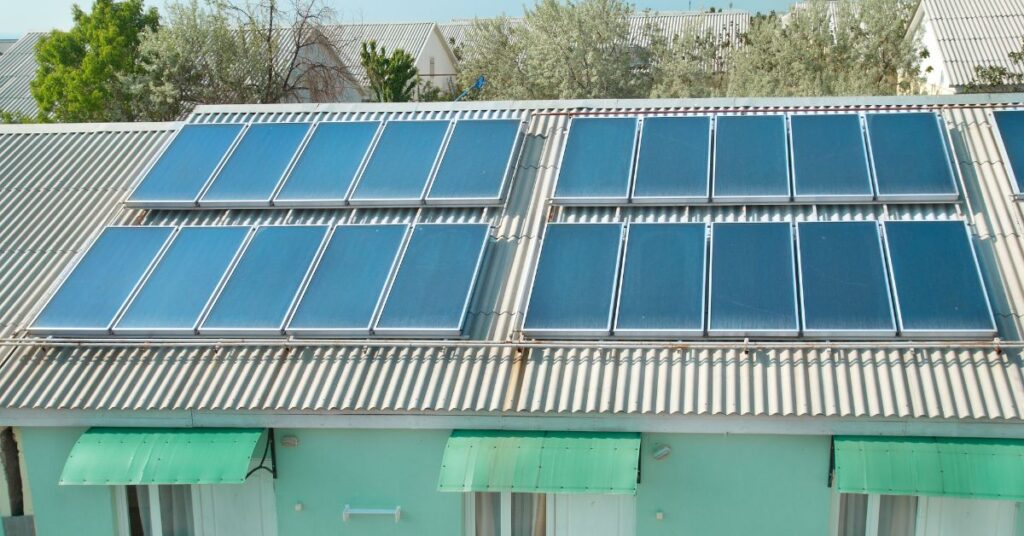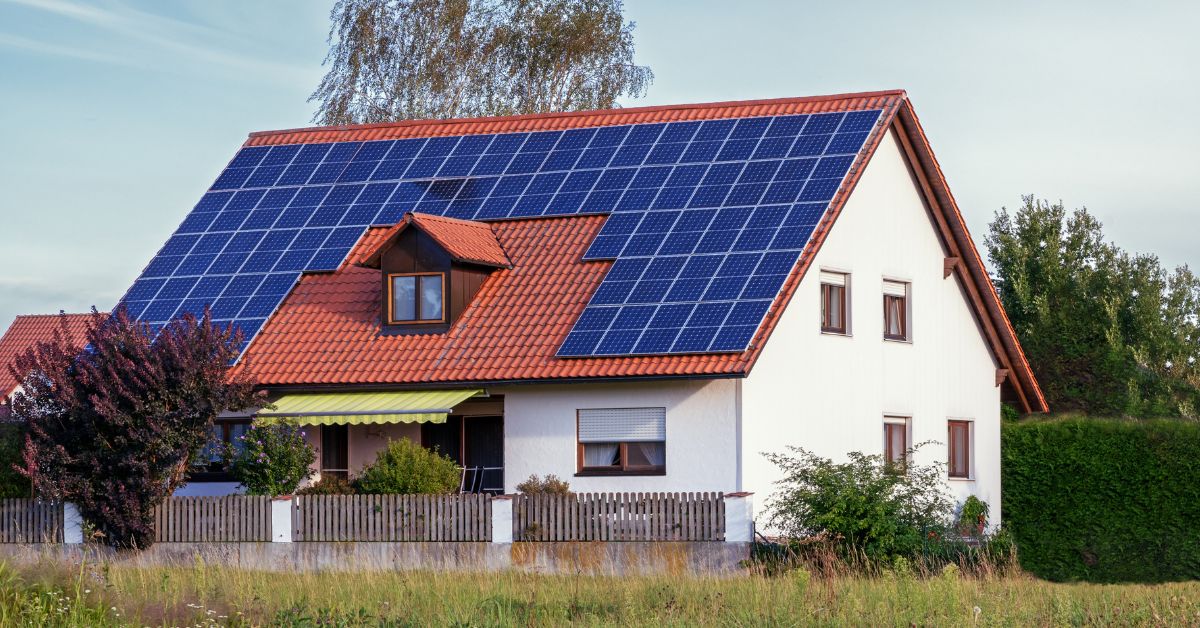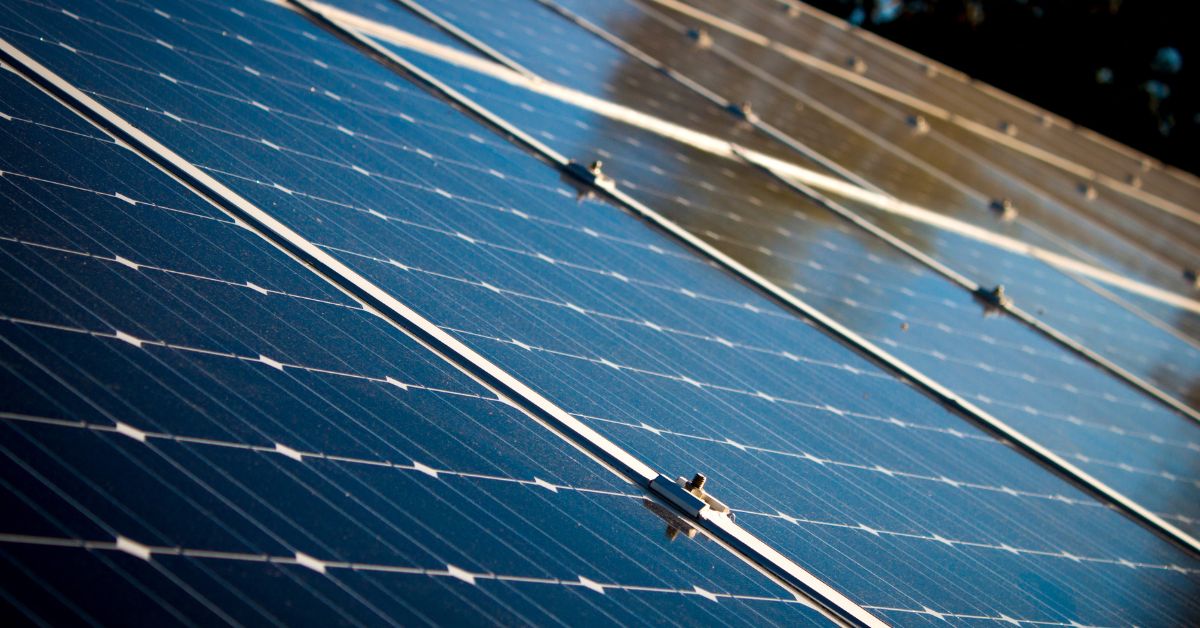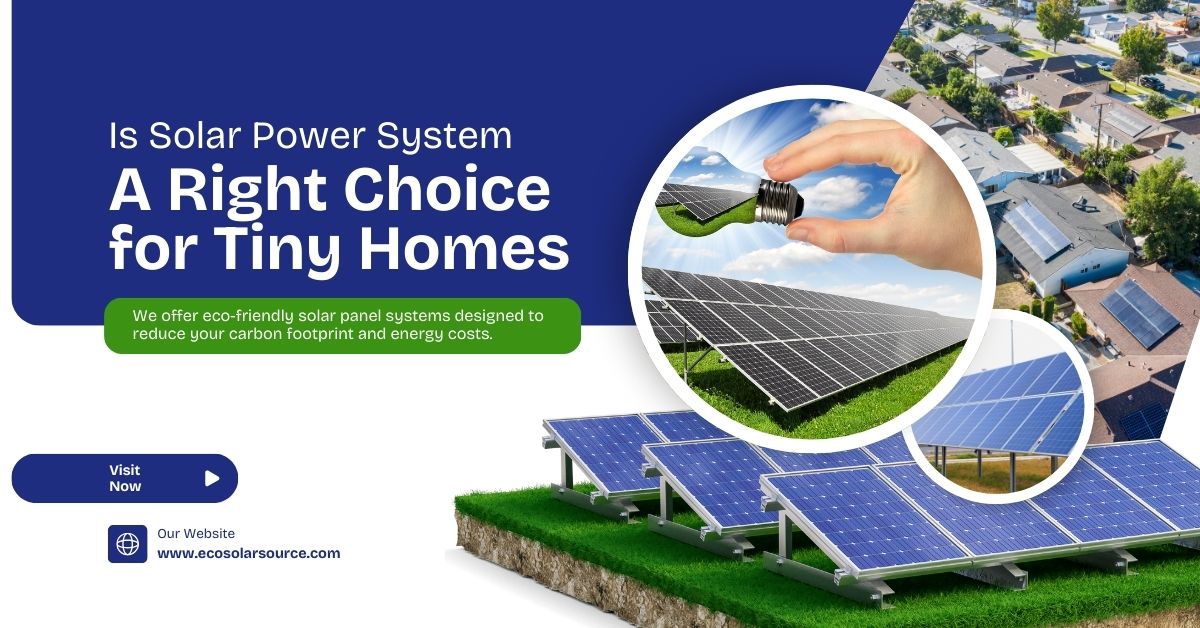Is Solar Power System A Right Choice for Tiny Homes
Know the details about Is Solar Power System A Right Choice for Tiny Homes, Choosing a solar power system for a tiny home is often an ideal solution, offering sustainability, independence, and cost savings. Tiny homes require less energy, and a small-scale solar setup can typically meet those demands effectively. Solar panels provide an off-grid option, perfect for homes in remote areas or eco-friendly setups.
They reduce reliance on fossil fuels and lower electricity bills, aligning well with the minimalist, low-impact lifestyle associated with tiny homes. Plus, advancements in solar technology now offer compact, efficient systems that fit small spaces. Solar power brings long-term benefits, enhancing both eco-consciousness and self-sufficiency.
Table of Contents
Is Solar Power System A Right Choice for Tiny Homes?
With a growing movement toward minimalist and eco-friendly living, many people are opting for tiny homes. These compact, often mobile dwellings offer a simpler lifestyle, a smaller environmental footprint, and a lower cost of living. But for tiny homeowners, making the best choice for power sources is a vital decision.
Solar power has gained popularity for tiny homes due to its sustainability, reduced reliance on the grid, and its potential to save on energy costs in the long run. However, solar isn’t for everyone, and there are various factors to consider. This article dives deep into whether a solar power system is the right choice for tiny homes by exploring its advantages, potential challenges, cost, installation, maintenance, and real-world applications.
Understanding Solar Power for Tiny Homes
How Does Solar Power Work?
Solar power harnesses energy from sunlight, converting it into electricity using solar panels. For tiny homes, solar panels are usually installed on the roof or set up as portable panels on the ground. The electricity generated by solar panels is then stored in batteries, allowing homeowners to use it even when the sun isn’t shining. A solar power system typically includes:
- Solar Panels: Convert sunlight into direct current (DC) electricity.
- Inverter: Converts DC electricity into alternating current (AC), suitable for powering household appliances.
- Batteries: Store the energy for later use, essential for off-grid living.
- Charge Controller: Prevents batteries from overcharging, increasing their lifespan.
The energy needs of tiny homes vary widely, but on average, a solar power system of 1–5 kilowatts (kW) can meet most of their requirements, depending on location, climate, and energy consumption habits.
Advantages of Solar Power for Tiny Homes

1. Environmentally Friendly
Solar power is one of the cleanest and greenest sources of energy. By using solar power, tiny homeowners can reduce their carbon footprint. The reduction of greenhouse gases, dependency on fossil fuels, and energy consumption from non-renewable sources aligns well with the eco-conscious lifestyle that many tiny homeowners seek.
2. Financial Savings Over Time
Although solar panels require an upfront investment, they often save money in the long run. Utility bills can be virtually eliminated if a tiny home is entirely off-grid. Even if the tiny home is connected to the grid, using solar as a supplement can significantly reduce electricity bills. Financial incentives, tax credits, and rebates can further reduce the overall cost.
3. Energy Independence
Solar panels provide the freedom to go off-grid, especially valuable for tiny homeowners who often live in remote or semi-remote areas. Energy independence means fewer concerns about power outages or surges from the main power grid, giving tiny home dwellers more autonomy and flexibility in where they can place their homes.
4. Portability
For mobile tiny homes (like those on wheels), portable solar panels are a viable option. Foldable or lightweight solar panels can be packed up and transported with the home, offering consistent power wherever it’s parked.
5. Quiet and Low-Maintenance
Unlike gas-powered generators, solar panels produce no noise, making them a peaceful choice for the minimalistic tiny home lifestyle. Solar systems require minimal maintenance, mainly periodic cleaning, and occasional inspections to ensure efficiency.
Challenges of Solar Power for Tiny Homes
1. High Initial Costs
Solar power systems can be expensive upfront. Even with tax incentives and rebates, the cost of high-quality panels, inverters, charge controllers, and batteries can add up. For tiny homeowners on a tight budget, this initial investment might seem daunting.
2. Space Constraints
Tiny homes have limited roof space, which may limit the number of solar panels that can be installed. This restriction can affect the amount of power that can be generated, particularly in low-sunlight areas. Tiny home dwellers need to be mindful of balancing panel size and placement.
3. Energy Storage Limitations
Battery storage can be a limitation, as batteries are both heavy and expensive. For those who wish to go entirely off-grid, ensuring enough stored energy to last through cloudy or low-sunlight days may require multiple or larger batteries, which take up precious space in a tiny home.
4. Dependency on Weather
Solar power generation is directly dependent on sunlight. This means that on cloudy or rainy days, power output can drop significantly. In areas with seasonal fluctuations in sunlight, such as those with long winters, additional energy sources or larger battery storage might be necessary.
5. Routine Maintenance
While solar panels require minimal maintenance, regular cleaning and occasional inspection of the system are still needed. Dirt, dust, and debris can build up on panels and reduce efficiency, so panels must be cleaned regularly. Batteries also require monitoring to ensure longevity and performance.
Cost Analysis: Is Solar Power Financially Viable for Tiny Homes?

The total cost of a solar power system for a tiny home can range from around $5,000 to $20,000, depending on size, energy requirements, and quality of components. Here’s a breakdown of the primary expenses on solar panels:
- Solar Panels: $2,000 to $10,000
- Inverter: $500 to $2,000
- Battery Storage: $1,000 to $5,000
- Charge Controller: $100 to $500
- Installation: $1,000 to $5,000 (optional, if done professionally)
In general, the larger and higher the quality of the system, the greater the cost. However, with federal tax credits and state rebates, the effective cost can be reduced by 26–30% in many areas.
Payback Period
For grid-tied systems, the payback period is typically 7–10 years, depending on local utility rates, sun exposure, and energy usage. For fully off-grid setups, the payback may take longer due to the higher upfront costs associated with battery storage. However, the peace of mind and autonomy of off-grid living can add intangible value for tiny homeowners.
Types of Solar Power Systems for Tiny Homes
1. Off-Grid Solar System
An off-grid system is entirely self-sufficient, with all power coming from solar energy stored in batteries. This system is ideal for tiny homes in remote areas where connecting to the grid would be impractical or too costly. However, off-grid systems are typically more expensive and require careful energy usage to avoid draining the batteries.
2. Grid-Tied Solar System
A grid-tied system connects to the main power grid. Excess power generated by the solar panels can be sent back to the grid, often resulting in credits on utility bills (net metering). This setup is beneficial in areas where sun exposure is inconsistent, allowing tiny homeowners to rely on grid power when solar production is low.
3. Hybrid Solar System
Hybrid systems combine both grid and battery storage. They allow homeowners to use solar energy as the primary power source while still having access to grid electricity when needed. These systems are more flexible but also more complex and expensive.
Practical Considerations for Installing Solar on a Tiny Home
1. Assess Energy Needs
A realistic assessment of energy consumption is crucial. Tiny homes usually require much less energy than traditional homes, but certain appliances (like electric heaters, refrigerators, or air conditioners) can still consume significant power. By calculating daily wattage requirements, tiny homeowners can determine the size of the solar system they need.
2. Choose the Right Equipment
Selecting high-efficiency panels and reliable components can maximize the effectiveness of the system. Investing in quality equipment, especially batteries and inverters, will pay off in the long run by reducing maintenance and extending lifespan.
3. Find the Optimal Placement
Optimal panel placement is key for maximum solar exposure. Ideally, panels should be positioned to face south (in the Northern Hemisphere) at an angle that captures the most sunlight year-round. This may mean considering tiltable mounting brackets, especially for mobile tiny homes.
4. Plan for Maintenance
Regular cleaning and system inspections are essential to ensure consistent performance. Keeping the panels free from dust and debris maximizes efficiency, while periodically checking batteries and connections will help avoid unexpected issues.
Real-Life Case Studies: Solar Power in Tiny Homes

Case Study 1: Off-Grid Living in a Remote Tiny Home
A couple living in a tiny home in rural Montana opted for a 3 kW off-grid solar power system with battery storage. This setup allowed them to live completely off the grid, meeting their needs for lighting, charging electronics, and running small appliances. However, during winter months, they supplement with a backup generator to ensure consistent power.
Case Study 2: Grid-Tied Tiny Home with Net Metering
In California, a grid-tied tiny homeowner installed a 2 kW solar power system, relying on net metering to offset utility costs. This system provides most of the home’s energy needs during the summer months, and any excess is credited toward their utility bill, reducing their overall cost throughout the year.
Case Study 3: Mobile Tiny Home with Portable Solar Panels
A digital nomad traveling across the U.S. in a tiny home on wheels installed portable, foldable solar panels. This flexible setup allows them to park and set up their solar panels wherever they stop. While they rely on battery storage, they have access to shore power at RV parks if needed.
FAQs About Is Solar Power System A Right Choice for Tiny Homes
Q1. Can a Solar Power System Fully Power a Tiny Home?
Yes, a properly designed solar power system can provide all the energy needed for a tiny home, though this depends on energy usage and available sunlight. Small appliances, efficient heating/cooling, and LED lighting can help maximize its potential.
Q2. How Many Solar Panels Will a Tiny Home Need?
The number of panels depends on your energy consumption and sunlight availability. Most tiny homes need around 2–6 panels, but a more accurate count comes from knowing the specific wattage of the appliances and devices you’ll use.
Q3. Do Tiny Homes Need Battery Storage for Solar Power?
Yes, battery storage is essential if you want power during nighttime or cloudy days. Lithium-ion batteries are popular for tiny homes due to their compact size and longer life.
Q4. Is Solar Power Cost-Effective for a Tiny Home?
Solar systems can be cost-effective, especially considering that tiny homes typically use less power. Initial setup can be pricey, but long-term savings on energy bills and low maintenance make it a worthy investment.
Q5. How Long Does it Take to Install a Solar Power System on a Tiny Home?
Installation time can vary from a day to a week, depending on whether it’s DIY or done by professionals and the complexity of the system. Many kits simplify this process for DIY-friendly setups.
Q6. What Are the Key Maintenance Needs of a Tiny Home Solar System?
Solar systems are low-maintenance. Regularly cleaning the panels and checking for any obstructions (like snow or debris) is usually sufficient. Battery maintenance varies, with lithium-ion needing less than lead acid.
Q7. Can a Tiny Home Solar System Be Mobile?
Yes, some solar setups are portable, ideal for tiny homes on wheels. Lightweight, foldable panels or flexible systems can be easily stowed or mounted on rooftops to allow for mobility without losing power access.
Q8. Are There Incentives or Rebates for Tiny Home Solar Installations?
Many regions offer tax credits or rebates for solar installations, even for tiny homes. It’s best to check local and federal incentives that could reduce your initial costs.
Q9. What Are the Limitations of Solar Power for Tiny Homes?
Limitations include dependence on sunny weather and limited roof space for panels. Battery storage can offset nighttime energy, but heavy-use appliances (like air conditioners or electric heaters) might still require backup power options.
Q10. Can Solar Power Be Combined with Other Power Sources in a Tiny Home?
Yes, many tiny homeowners use a hybrid system that includes solar with other sources, like generators or grid connections. This setup provides added reliability, especially in regions with inconsistent sunlight.
Conclusion: Is Solar Power the Right Choice for Tiny Homes?
Solar power is an excellent choice for tiny homes, especially for those looking for a sustainable, independent, and low-maintenance energy solution. However, solar power isn’t universally ideal and may require additional planning and budgeting for those with high energy needs or in regions with limited sunlight. Tiny homeowners who prioritize sustainability, flexibility, and long-term savings will likely find solar power an ideal match. By carefully assessing energy needs, budgeting for quality equipment, and maintaining the system, tiny homeowners can enjoy the benefits of a solar-powered lifestyle for years to come.
Click here to learn more about Is Solar Power System A Right Choice for Tiny Homes
Click here to learn more about How to Buy and Sell a Home with Solar Panels

